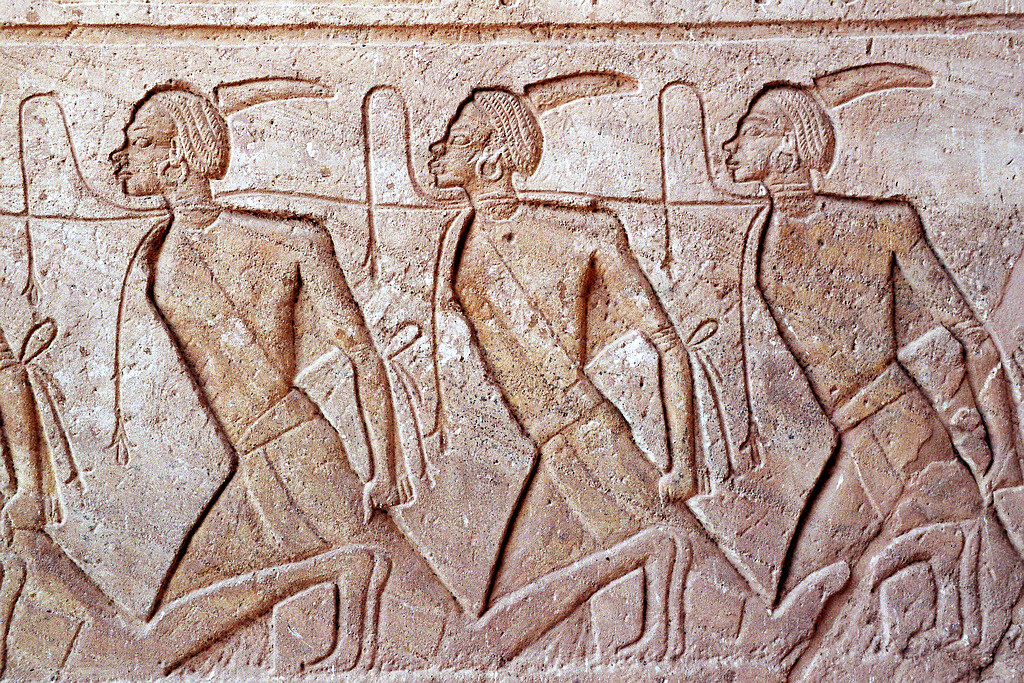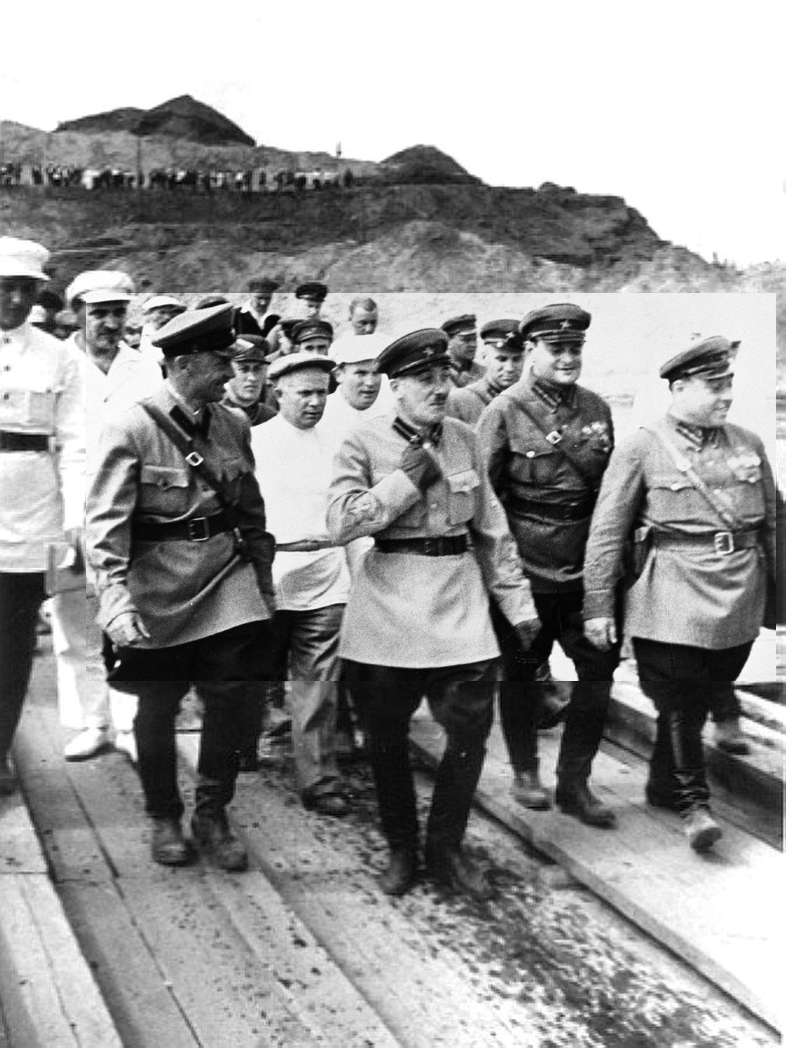|
Sachsenhausen Memorial And Museum
Sachsenhausen () or Sachsenhausen-Oranienburg was a German Nazi concentration camp in Oranienburg, Germany, used from 1936 until April 1945, shortly before the defeat of Nazi Germany in May later that year. It mainly held political prisoners throughout World War II. Prominent prisoners included Joseph Stalin's oldest son, Yakov Dzhugashvili; assassin Herschel Grynszpan; Paul Reynaud, the penultimate Prime Minister of France; Francisco Largo Caballero, Prime Minister of the Second Spanish Republic during the Spanish Civil War; the wife and children of the Crown Prince of Bavaria; Ukrainian nationalist leader Stepan Bandera; and several enemy soldiers and political dissidents. Sachsenhausen was a labor camp, outfitted with several subcamps, a gas chamber, and a medical experimentation area. Prisoners were treated inhumanely, fed inadequately, and killed openly. After World War II, when Oranienburg was in the Soviet Occupation Zone, the structure was used by the NKVD as NKVD ... [...More Info...] [...Related Items...] OR: [Wikipedia] [Google] [Baidu] |
NKVD Special Camp Nr
The People's Commissariat for Internal Affairs (russian: Наро́дный комиссариа́т вну́тренних дел, Naródnyy komissariát vnútrennikh del, ), abbreviated NKVD ( ), was the interior ministry of the Soviet Union. Established in 1917 as NKVD of the Russian Soviet Federative Socialist Republic, the agency was originally tasked with conducting regular police work and overseeing the country's prisons and labor camps. It was disbanded in 1930, with its functions being dispersed among other agencies, only to be reinstated as an all-union commissariat in 1934. The functions of the OGPU (the secret police organization) were transferred to the NKVD around the year 1930, giving it a monopoly over law enforcement activities that lasted until the end of World War II. During this period, the NKVD included both ordinary public order activities, and secret police activities. The NKVD is known for its role in political repression and for carrying out the Great ... [...More Info...] [...Related Items...] OR: [Wikipedia] [Google] [Baidu] |
Spanish Civil War
The Spanish Civil War ( es, Guerra Civil Española)) or The Revolution ( es, La Revolución, link=no) among Nationalists, the Fourth Carlist War ( es, Cuarta Guerra Carlista, link=no) among Carlism, Carlists, and The Rebellion ( es, La Rebelión, link=no) or The Uprising ( es, La Sublevación, link=no) among Republicans. was a civil war in Spain fought from 1936 to 1939 between the Republican faction (Spanish Civil War), Republicans and the Nationalist faction (Spanish Civil War), Nationalists. Republicans were loyal to the left-leaning Popular Front (Spain), Popular Front government of the Second Spanish Republic, and consisted of various socialist, communist, separatist, anarchist, and Republicanism in Spain, republican parties, some of which had opposed the government in the pre-war period. The opposing Nationalists were an alliance of Falangism, Falangists, monarchists, conservatives, and Traditionalism (Spain), traditionalists led by a National Defense Junta, military junt ... [...More Info...] [...Related Items...] OR: [Wikipedia] [Google] [Baidu] |
Albert Speer
Berthold Konrad Hermann Albert Speer (; ; 19 March 1905 – 1 September 1981) was a German architect who served as the Reich Ministry of Armaments and War Production, Minister of Armaments and War Production in Nazi Germany during most of World War II. A close ally of Adolf Hitler, he was convicted at the Nuremberg trials and sentenced to 20 years in prison. An architect by training, Speer joined the Nazi Party in 1931. His architectural skills made him increasingly prominent within the Party, and he became a member of Hitler's inner circle. Hitler commissioned him to design and construct structures including the Reich Chancellery and the Nazi party rally grounds in Nuremberg. In 1937, Hitler appointed Speer as General Building Inspector for Berlin. In this capacity he was responsible for the Central Department for Resettlement that Nazi persecution of Jews, evicted Jewish tenants from their homes in Berlin. In February 1942, Speer was appointed as Reich Minister of Armame ... [...More Info...] [...Related Items...] OR: [Wikipedia] [Google] [Baidu] |
Gas Van
A gas van or gas wagon (russian: душегубка, ''dushegubka'', literally "soul killer"; german: Gaswagen) was a truck reequipped as a mobile gas chamber. During the World War II Holocaust, Nazi Germany developed and used gas vans on a large scale as an extermination method to murder inmates of asylums, Poles, Romani people, Jews, and prisoners in occupied Poland, Belarus, Yugoslavia, the Soviet Union, and other regions of German-occupied Europe. One case of usage of gas van by Soviet NKVD during the Great Purge was documented. Nazi Germany The use of gas vans by the Germans to murder Jews, Poles, Romani people, mentally ill people, and prisoners in occupied territories during World War II originated with the Nazi Euthanasia Program in 1939. Ordered to find a suitable method of killing, the ''Technical Institute for the Detection of Crime'' ("Kriminaltechnisches Institut der Sicherheitspolizei", abbreviated KTI) of the Reichssicherheitshauptamt (RSHA) decided to gas victi ... [...More Info...] [...Related Items...] OR: [Wikipedia] [Google] [Baidu] |
Auschwitz
Auschwitz concentration camp ( (); also or ) was a complex of over 40 Nazi concentration camps, concentration and extermination camps operated by Nazi Germany in Polish areas annexed by Nazi Germany, occupied Poland (in a portion annexed into Germany in 1939) during World War II and the Holocaust. It consisted of #Auschwitz I, Auschwitz I, the main camp (''Stammlager'') in Oświęcim; #Auschwitz II-Birkenau, Auschwitz II-Birkenau, a concentration and extermination camp with gas chambers; #Auschwitz III, Auschwitz III-Monowitz, a Arbeitslager, labor camp for the chemical conglomerate IG Farben; and List of subcamps of Auschwitz, dozens of subcamps. The camps became a major site of the Nazis' Final Solution to the Jewish Question, final solution to the Jewish question. After Germany Causes of World War II#Invasion of Poland, sparked World War II by Invasion of Poland, invading Poland in September 1939, the ''Schutzstaffel'' (SS) converted Auschwitz I, an army barracks, into a p ... [...More Info...] [...Related Items...] OR: [Wikipedia] [Google] [Baidu] |
Genickschussanlage
Genickschussanlage (German for "neck shooting facility") is the official name of a facility used for surprise executions in Nazi Germany. The victim was placed, under the pretext of a medical examination, in a position where a shot could be fired into the back of their neck from the neighbouring room. For that purpose, the facilities were partly disguised as height measuring devices or medicinal instruments. The facilities are mostly known from concentration camps, where they were not only used to carry out official death sentences but also to carry out inconspicuous murder of larger groups of victims. In the Buchenwald concentration camp In the Buchenwald concentration camp, after 1941, the facility was mostly used to execute Soviet prisoners of war A prisoner of war (POW) is a person who is held Captivity, captive by a belligerent power during or immediately after an armed conflict. The earliest recorded usage of the phrase "prisoner of war" dates back to 1610. Belliger ... [...More Info...] [...Related Items...] OR: [Wikipedia] [Google] [Baidu] |
Prisoner Of War
A prisoner of war (POW) is a person who is held captive by a belligerent power during or immediately after an armed conflict. The earliest recorded usage of the phrase "prisoner of war" dates back to 1610. Belligerents hold prisoners of war in custody for a range of legitimate and illegitimate reasons, such as isolating them from the enemy combatants still in the field (releasing and repatriating them in an orderly manner after hostilities), demonstrating military victory, punishing them, prosecuting them for war crimes, exploiting them for their labour, recruiting or even conscripting them as their own combatants, collecting military and political intelligence from them, or indoctrinating them in new political or religious beliefs. Ancient times For most of human history, depending on the culture of the victors, enemy fighters on the losing side in a battle who had surrendered and been taken as prisoners of war could expect to be either slaughtered or enslaved. Ea ... [...More Info...] [...Related Items...] OR: [Wikipedia] [Google] [Baidu] |
Death Camp
Nazi Germany used six extermination camps (german: Vernichtungslager), also called death camps (), or killing centers (), in Central Europe during World War II to systematically murder over 2.7 million peoplemostly Jewsin the Holocaust. The victims of death camps were primarily murdered by gassing, either in permanent installations constructed for this specific purpose, or by means of gas vans. The six extermination camps were Chełmno, Belzec, Sobibor, Treblinka, Majdanek and Auschwitz-Birkenau. Auschwitz and Majdanek death camps also used extermination through labour in order to kill their prisoners. The idea of mass extermination with the use of stationary facilities, to which the victims were taken by train, was the result of earlier Nazi experimentation with chemically manufactured poison gas during the secretive Aktion T4 euthanasia programme against hospital patients with mental and physical disabilities. The technology was adapted, expanded, and applied in wartime ... [...More Info...] [...Related Items...] OR: [Wikipedia] [Google] [Baidu] |
Bundesarchiv Bild 183-78612-0004, KZ Sachsenhausen, Häftlinge Bei Erdarbeiten
, type = Archive , seal = , seal_size = , seal_caption = , seal_alt = , logo = Bundesarchiv-Logo.svg , logo_size = , logo_caption = , logo_alt = , image = Bundesarchiv Koblenz.jpg , image_caption = The Federal Archives in Koblenz , image_alt = , formed = , preceding1 = , preceding2 = , dissolved = , superseding1 = , superseding2 = , agency_type = , jurisdiction = , status = Active , headquarters = PotsdamerStraße156075Koblenz , coordinates = , motto = , employees = , budget = million () , chief1_name = Michael Hollmann , chief1_position = President of the Federal Archives , chief2_name = Dr. Andrea Hänger , chief2_position ... [...More Info...] [...Related Items...] OR: [Wikipedia] [Google] [Baidu] |
NKVD
The People's Commissariat for Internal Affairs (russian: Наро́дный комиссариа́т вну́тренних дел, Naródnyy komissariát vnútrennikh del, ), abbreviated NKVD ( ), was the interior ministry of the Soviet Union. Established in 1917 as NKVD of the Russian Soviet Federative Socialist Republic, the agency was originally tasked with conducting regular police work and overseeing the country's prisons and labor camps. It was disbanded in 1930, with its functions being dispersed among other agencies, only to be reinstated as an all-union commissariat in 1934. The functions of the OGPU (the secret police organization) were transferred to the NKVD around the year 1930, giving it a monopoly over law enforcement activities that lasted until the end of World War II. During this period, the NKVD included both ordinary public order activities, and secret police activities. The NKVD is known for its role in political repression and for carrying out the Great ... [...More Info...] [...Related Items...] OR: [Wikipedia] [Google] [Baidu] |
Soviet Occupation Zone
The Soviet Occupation Zone ( or german: Ostzone, label=none, "East Zone"; , ''Sovetskaya okkupatsionnaya zona Germanii'', "Soviet Occupation Zone of Germany") was an area of Germany in Central Europe that was occupied by the Soviet Union as a communist area, established as a result of the Potsdam Agreement on 1 August 1945. On 7 October 1949 the German Democratic Republic (GDR), commonly referred to in English as East Germany, was established in the Soviet Occupation Zone. The SBZ was one of the four Allied occupation zones of Germany created at the end of World War II with the Allied victory. According to the Potsdam Agreement, the Soviet Military Administration in Germany (German initials: SMAD) was assigned responsibility for the middle portion of Germany. Eastern Germany beyond the Oder-Neisse line, equal in territory to the SBZ, was to be annexed by Poland and its population expelled, pending a final peace conference with Germany. By the time forces of the United St ... [...More Info...] [...Related Items...] OR: [Wikipedia] [Google] [Baidu] |






